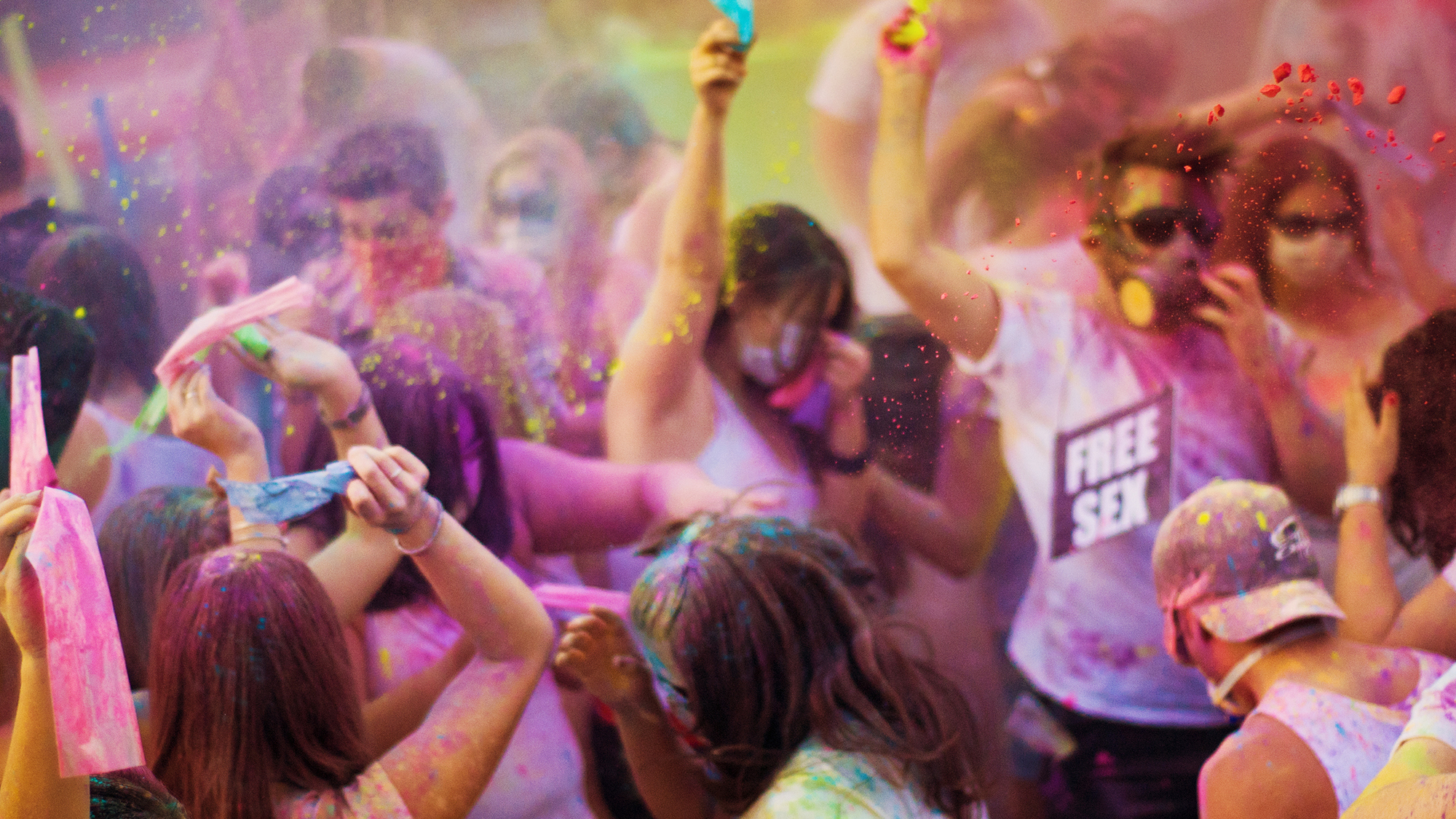On Friday, millions of Hindus across the world observed Holi, the Indian festival of spring. It’s the sort of party that even the non-religious can appreciate; the focus is on fun, and when done right, people flock to the streets to dump water on each other, throw colorful powder and get high.
Holi is one of the few Indian holidays where both men and women, boys and girls, and the young and old indiscriminately drink a cannabis milkshake called bhang and eat weed candies. “Holi has a variety of significances, some more localized, but it’s generally a spring carnival festival during which time people revel in being together and doing things which on other days would be considered wrong,” says Rashi Rohatgi, a teacher in London who holds a master’s degree in the History of Religions from the University of Chicago and a PhD in Languages and Cultures of South Asia and Africa from SOAS. “Bhang fits right into this,” she says.
The relationship between Hinduism and illicit substances is centuries-old, dating back to ancient Sanskrit scriptures. “We have drunk Soma and become immortal; we have attained the light,” reads one section in the Rig Veda, referring to a drug associated with hallucinogenic qualities. But Soma gave way to pot, experts believe, because the latter was far easier to grow in India. “The famous ‘Churning of the Ocean’ story (which occurs in a bunch of places, but most famously in the Puranas) holds that one of parts of the nectar that emerged from the churning was pot,” says Rohatgi. “Also, in the Atharva Veda, pot is celebrated as helping with anxiety, alongside a number of more traditionally medical issues like fever.”
The Atharva Veda describes Shiva, one of the primary forms of God, coming across cannabis leaves, eating them and loving them. He’s known as the Destroyer and the Creator — and also is the God of bhang. “Now many devotees pour bhang over the Shivling at the temple — though most of the growing middle class now uses water,” Rohatgi says. Sadhus — holy men and women — also smoke ganja to enhance their religious concentration.
One might think, then, that use of cannabis is encouraged within Indian culture. It certainly has not historically carried the same taboos in India as it has in the West, but Rohatgi explains that it’s not explicitly favored, either. While drugs were always easily available, “the traditional Hindu approach to everyday suffering,” as she puts it, frowns on using drugs to overcome personal obstacles or problems. “Traditionally Indian society is quite socially stratified, with the intention of keeping a large, complex society under control, and so rather scriptures that talk about duty become more important,” she explains. “Instead, drug use is seen as useful for people who want to have a mystical experience, and therefore not really woven into the fabric of everyday.”
Additionally, Western norms and attitudes about drugs have migrated to India over the past century. Taken aback by the prevalence of ganja and bhang in India, British colonists in 1893 commissioned a more than 3,000-page report in attempt to regulate the drug. But the study concluded the opposite of what they expected, finding that moderate usage may be beneficial and that abuse of the prevalent substance was rare. The report changed little, but after India’s independence, legislation was introduced to control the flow of cannabis. In 1961, an international UN treaty pushed by the U.S. and other Western countries forced India to impose restrictions on weed, setting in motion decades of harsh legislation against the substance in India. Some of those “international norms,” Rohatgi notes, “may have since become societal norms.”
Bringing us back to weed’s significance in Holi. Bhang is “really important for Holi,” Rohatgi says, “when people get to break out of their everyday life.”



